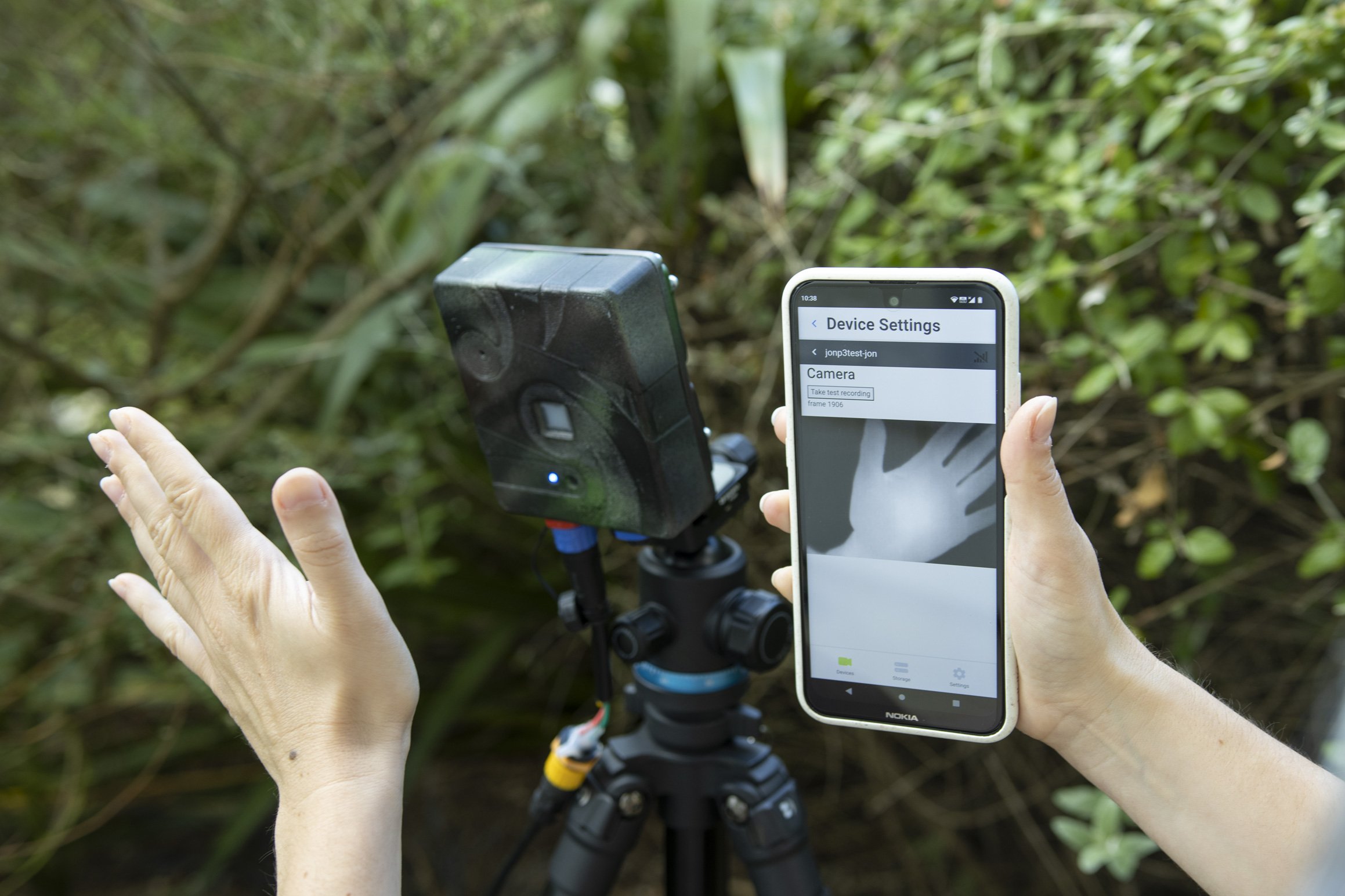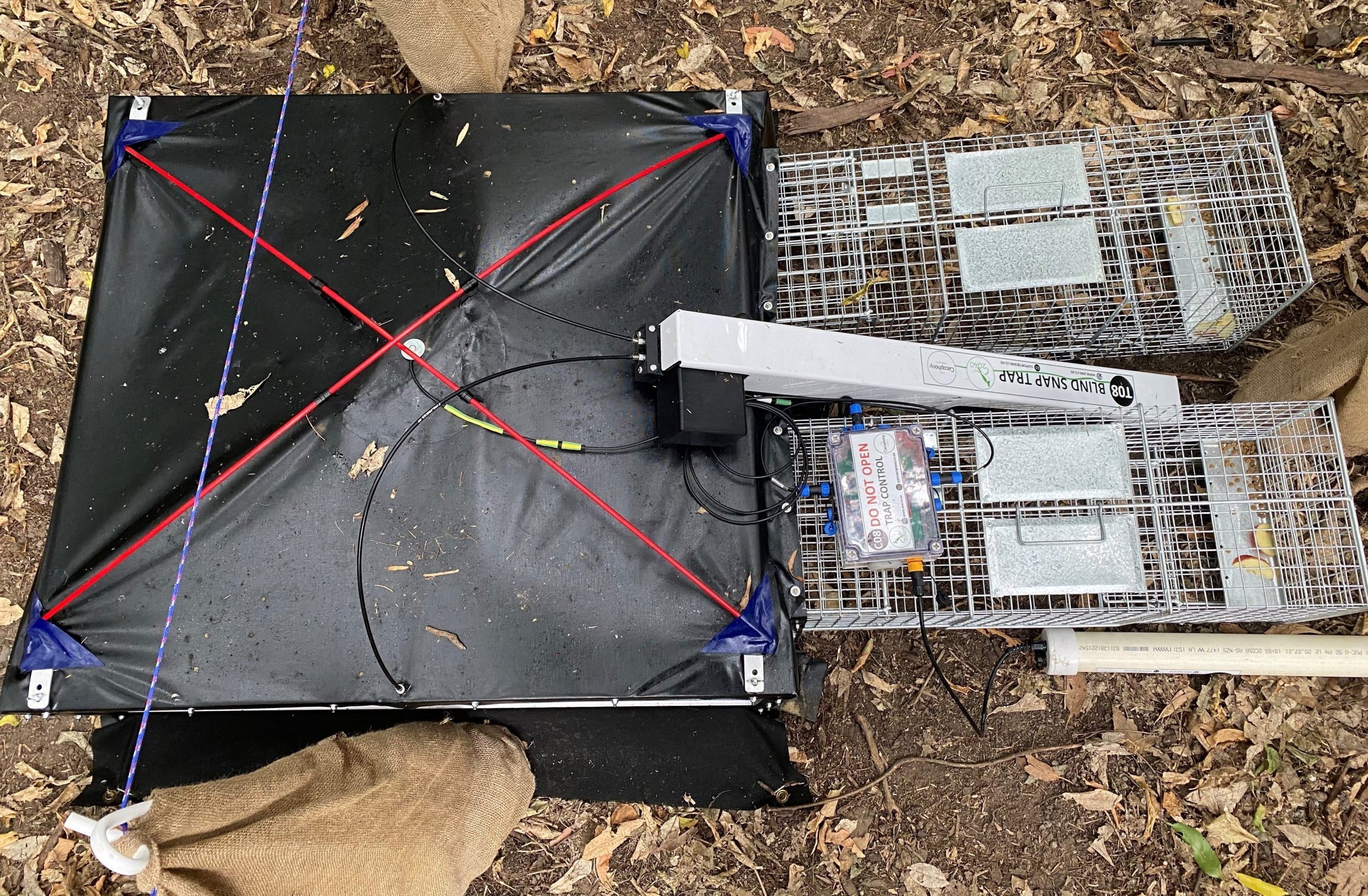
Blog


The multiple uses of the new Doc AI cam
This new camera is the most sensitive and easy way to monitor both predators birds. AI and data connectivity mean your know instantly what is going on and there are also lots of other ways it can help with conservation like acting as an AI trigger for traps, intelligent lures etc. It is less than half the cost and lasts 3 times longer than previous versions.

Tools to Market Announcement: DOC funds two Cacophony projects
We are proud to announce that, as part of the latest Tools To Market investments, DOC are now providing funding for two of our projects; the first to deliver a new version of our thermal camera, and the second to deliver a number of improvements to our monitoring platform, including adding support for trailcams.

Securing the ends of predator proof fences
Around New Zealand, a number of highly dedicated people have spent some of their precious funds to install predator-proof fences to protect sanctuaries. Fences leak, predators often finding ways to get around the ends of the fence. Today we share some very pleasing updates from Mamaku Point on Rakiura.

First crack at a digital trigger
One of the most important components in our set of tools is a digital trigger. We define a digital trigger as using a camera to decide when to activate a trap rather than using a trip plate or motion sensor. Such a trigger would allow trap designers (including us) to design open trap entrances without having to worry about the risk of harming our precious taonga. So we've been working on just such a trigger and today we'd like to share some of our findings with you.

Total Cost of Ownership: Trailcams vs cognified Thermal Cams
Conservation projects need to make hard decisions based on the cost of deployments and the cost of a camera network can be considerable. As with any technology purchase, it can be misleading to consider only the initial purchase cost of the device - there are a number of factors that influence the Total Cost of Ownership (TCO) of your camera setup. We've worked with DOC to look into what the true TCO of a camera set up is.

How accurate is Artificial Intelligence for predator recognition?
One of the most common questions we get asked is how accurate our Artificial Intelligence(AI) solution for predator identification is.

Predator Free 2050 Ltd fund further development of our trap
We are proud to be part of the latest round of funding from Predator Free 2050 Ltd. The funding will allow us to take the trap to the next level with the development of an auto-reset mechanism, an intelligent trigger to keep our taonga safe, and an automated kill and clear mechanism.

Cacophony trap showing ten times (10x) higher catch rate
We've had our trap out in the field and, over a sustained period, the trap has shown a catch rate 10x higher than traditional traps.
We report on results of a trap deployment from September 2021 through to March 2022.

Thermal Camera: What can it do for you today?
2021 was a very productive year for us here. So we thought it was time for a recap of our products and an overview of what the products can do for you. Today we focus on our Thermal Camera.

Elimination vs Suppression. How does Covid-19 compare to NZ’s predator elimination projects?
For Covid, NZ was applying an elimination strategy that acknowledges there will still be cases but they can be controlled. With predators, NZ has great success with elimination on islands and in fenced sanctuaries. There are now numerous projects attempting elimination on the mainland. An analogy with Covid is useful as it helps understand the key tools needed for an elimination strategy.

Trawling for predators? Predator Trawling vs Line Catching
If you have read any of our previous work you know just how many predators walk past baited traps. We suspect there is no combination of great baits/traps that will ever make it possible to catch every last predator. Just as you would not be able to catch ALL the fish in an area with just line fishing. We may need something of a more industrial scale to achieve total predator elimination.

New features, new products
The team have been busy again - new software features, new products from our partners at 2040.co.nz, and an update on manufacturing.

Kiwi ingenuity developing world-leading predator eradication technology
We're proud to be featured in the press release from our friends at Predator Free 2050 about the latest tech now available.

More evidence of low interaction rates with traditional traps
Some great research on hedgehogs in the McKenzie Basin by Nick Foster.

Update: Low predator interaction on tree mounted devices
A brief update sharing more video evidence of low interaction rates on tree-mounted devices.

Software updates released
We've recently released a number of improvements to our online portal and to our Sidekick android app.

Trap development update
Our high catch rate trap has now been out in the wild in a few areas so it's time to give you a brief update.
